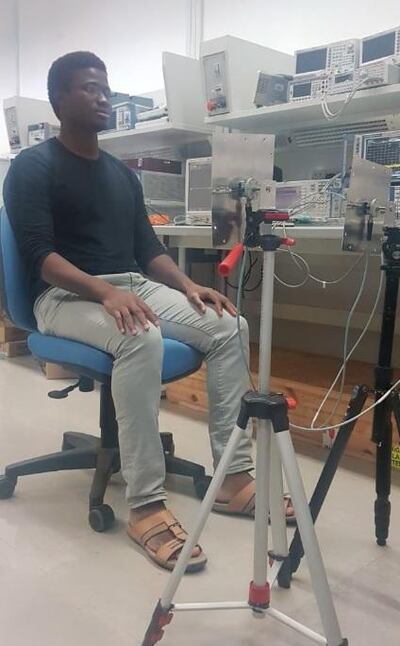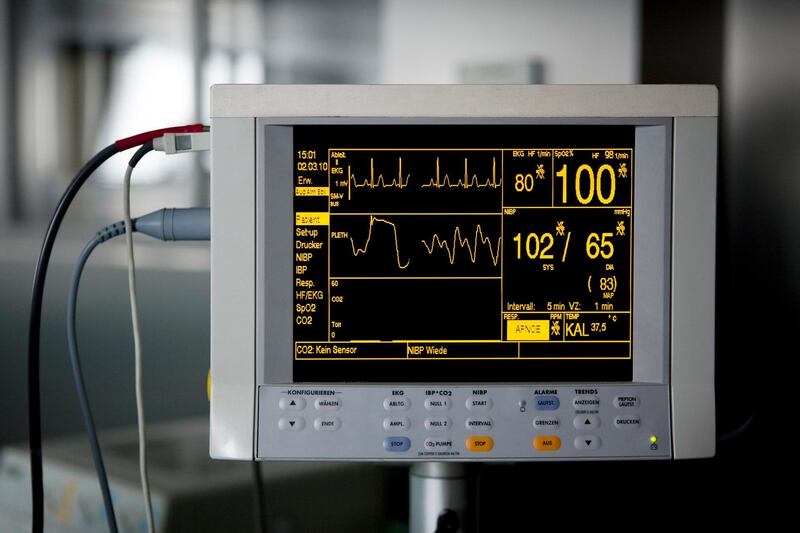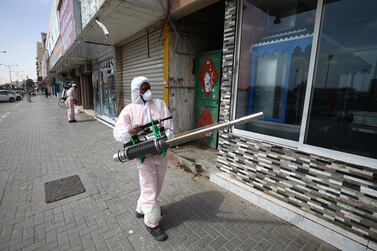Vital signs such as blood pressure and heart rate could soon be monitored wirelessly via radar following pioneering work by UAE researchers.
A team at Khalifa University believe the technology could be used in hospitals and from homes, reducing the need for doctors' house visits and avoiding the need for patients to be physically hooked up to machines.
Scientists hope that in time the radars could also be deployed in public settings such as airports to monitor the health of passengers and prevent the spread of future pandemics.
A prototype device for individual monitoring has already been built and researchers are now working on refining their design.
They believe the technology could help improve efficiency in operating theatres, reduce dependance on care homes and prevent cot deaths.
“It’s interesting and challenging work but we also feel good about coming up with a solution that can contribute to society,” said Baker Mohammad, Associate Professor of Electronic Engineering at Khalifa University.
“The four major vital signs are body temperature, heart rate, breath rate and blood pressure.
"They provide almost a complete picture of individuals’ body vital functions and help to assess their general physical health.
“The prototype we have built is a little bit bulky for an operating room or as a mobile device. So our goal now is to build a customised solution for these purposes.”
Radars have been used for monitoring patient breathing and circulation since the 1970s.
However, rapid advances in technology mean researchers believe they can now analyse multiple vital signs at once, with small, highly efficient devices.
The radar works by sending out electromagnetic waves which can detect a person’s heartbeat, breathing patterns and blood pressure.
The data then bounces back to the unit where an onboard processor is able to analyse the information.
Small, portable devices could be used by medics to analyse patients or they could be installed in homes to monitor patients and transmit readings remotely. They could also raise the alarm if abnormal readings were found.
While academics say they have shown the technology does work for individual monitoring provided a patient remains motionless, they admit further study is required before they can be deployed to monitor large groups, for example in airports.
This is because multiple body movements could confuse the radar processors. Prof Mohammad also said there could be privacy concerns about spying on a person’s vital signs without their knowledge.
However, he believes these could be overcome with further research and regulation, and that one day radars may be a far more effective way to check a person’s health than the body temperature cameras which have recently appeared at UAE airports and malls to scan for coronavirus cases.
“Our proposed radar-based vital sign detection system has great potential in monitoring crowds or groups of passengers from a distance,” said Prof Mohammad, who is also director of Khalifa University’s System on Chip Centre (SOCC) and has published his findings in an academic paper.
“Hospitals told us they were already interested in contactless monitoring. We were also thinking we could make a small miniature radar which we could put in a crib, and if the baby was to stop breathing, it would alert the parents.
“But now with coronavirus it has made us think it could be of even more interest.

"If the UAE succeeded in getting this technology to a stage that we could put it in airports, planes or schools to look for abnormalities, it could be very useful.”
Research is already underway on refining the prototype, and the potential for using radar to monitor the health of larger groups.
“To further improve the contactless vital signs detection accuracy, the SOCC team is currently working on implementing the radar at millimetre-wave [extremely high] frequencies,” Prof Mohammad said.
“Moving to higher frequencies enables higher heart rate detection. This feature could help monitor, for example, the vital signs of students in a classroom or passengers in airplane.”






